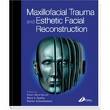
After reviewing numerous research studies on sport-related maxillofacial fractures, several trends are seen. First, males sustain the largest percent of these types of injuries as compared to women. Reports range from 10 to 15:1. This is no surprise given that there are more males than females who participate in contact sports at all age levels. Often, only a single facial bone is fractured with the nose, cheek, orbit, and mandible making up most of the isolated injuries. Dentoalveolar fractures (teeth loosening and avulsions), while still occurring, have decreased in the past decade as the availability and use of mouthguards have become more widely used.
Most of the facial fractures, in my Indianapolis plastic surgery experience, come from soccer, baseball, basketball and hockey…contact sports in which there is little to no facial protection. Flying objects are the main source in baseball and hockey due to the speed and small size of the baseball and puck. Head and upper extremity contact cause most soccer and basketball facial injuries.
With contemporary facial fracture repair methods, many athletes can return to training and competition sooner than in days past. Three-dimensional CT scans provide an immediate assessment of the injury so the need for surgery can be promptly determined. With knowing what to do, surgical repair can be done as soon as possible. With the exception of certain types of nasal fractures, most facial fractures can be promptly treated without waiting for swelling to subside.
Modern low-profile titanium plates and screws enable most facial fractures to be repositioned and secured quite accurately. They are strong enough to not only hold the bones in place but can resist repeat trauma during the bone healing period. They rarely need to be removed as titanium has superb biocompatibility with bone and often becomes overgrown with new healing bone. Resorbable plates and screws are also available but if one is interested in returning to sporting activities as soon as possible, metal fixation is a better choice for earlier return to activities.
Nasal fractures are the one exception to early treatment and bone plating. It is hard to know the full extent of nasal structure displacement since much of the nose is cartilage and not bone. It is usually better to let the swelling go down before attempting surgical repair. The small and thin size of the nasal bones do not permit rigid bone fixation to be done. This is why splinting and protection of the nose is critical for a long time even after returning to sports activity.
Dr. Barry Eppley
Indianapolis, Indiana


